A Photographer's Journey Through Midcentury Asia
The Rubin Museum of Art’s current exhibition, Witness at a Crossroads: Photographer Marc Riboud in Asia, showcases photographs taken by Riboud during his 1950s and '60s trips across Asia, to Turkey, Iran, Afghanistan, Pakistan, India, China, and Japan.

The Rubin Museum of Art’s current exhibition, Witness at a Crossroads: Photographer Marc Riboud in Asia, showcases photographs taken by Riboud during his 1950s and ’60s trips across Asia, to Turkey, Iran, Afghanistan, Pakistan, India, China, and Japan. During his three years of journeying, Riboud, a disciple of photographer Henri Cartier-Bresson, captured a vast range of cultures and sociopolitical moments, from China under the rule of Mao Zedong to Iran at the time of Shah Mohammad Reza Pahlavi, the last Iranian king before the 1979 revolution.
Rubin Curator Beth Citron has arranged the more than 100 images by country and geographic region, a choice that helpfully unites Riboud’s broad range of subjects in a cohesive historical context. The work clearly divulges Cartier-Bresson’s influence, but to view it solely from this perspective is to overlook the uniqueness of Riboud’s eye. In certain photographs “the decisive moment” appears to be the dominant conceptual framework: “Road to Khyber Pass” (Afghanistan, 1956) captures a man on a bicycle passing a signpost that directs cars to the left, donkeys and camels to the right. Confronted with the conundrum of a mode of transportation that is neither as advanced as a car nor as unsophisticated as a camel, the bike rider has optimistically decided to side with modernity. Riboud captures the instant after that choice.

Other photographs focus intensely on a subject’s expression, evoking the work of Dorothea Lange or Walker Evans more than that of Cartier-Bresson. “On a Train from Hong Kong to Guangzhou” (1957) captures a woman curled in a train seat. Her arms cross in front of her chest to form a headrest, and her eyes gaze off into the distance, filled with depths of contemplative expression. Historical context aside, the photo stands on its own as an arrestingly quiet portrait.
Ephemera in the exhibition, including letters with Cartier-Bresson and negative sheets, often feel secondary. Each photograph potently evokes a microcosm of an entire world on its own, the result of Riboud’s fusion of the geometry of setting and the probing of individual emotion. Witness at a Crossroads offers both an excellent introduction to the French photographer’s work and a detailed study of three years of his oeuvre.
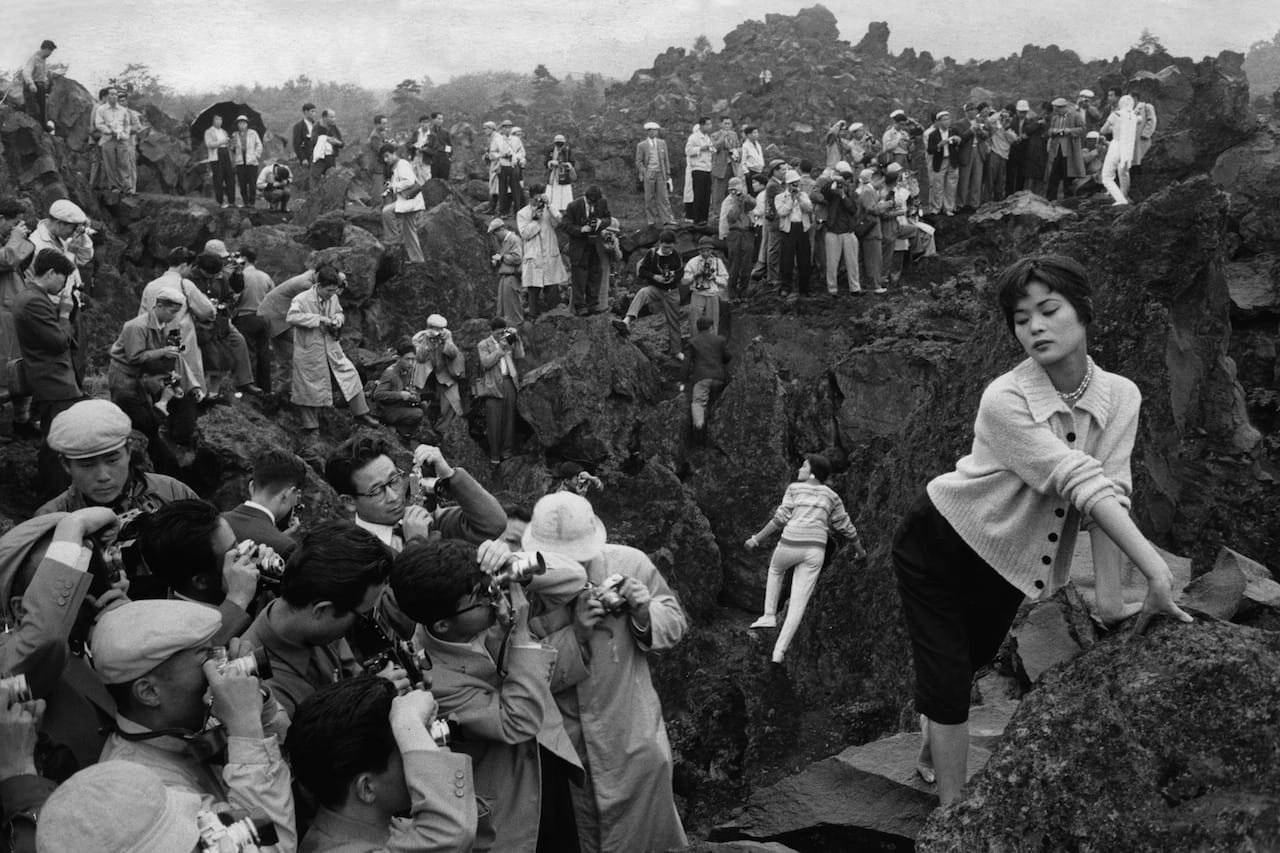


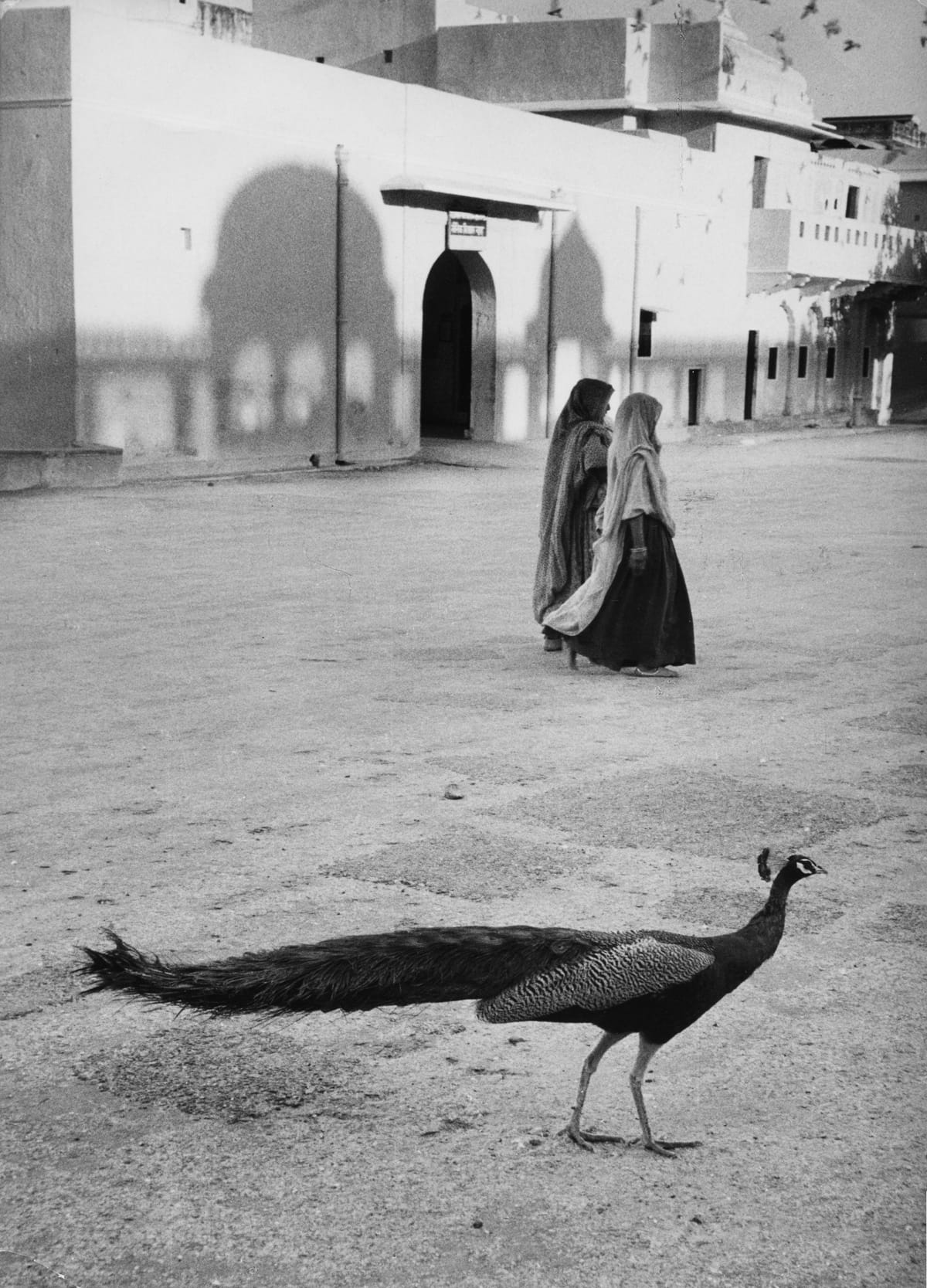

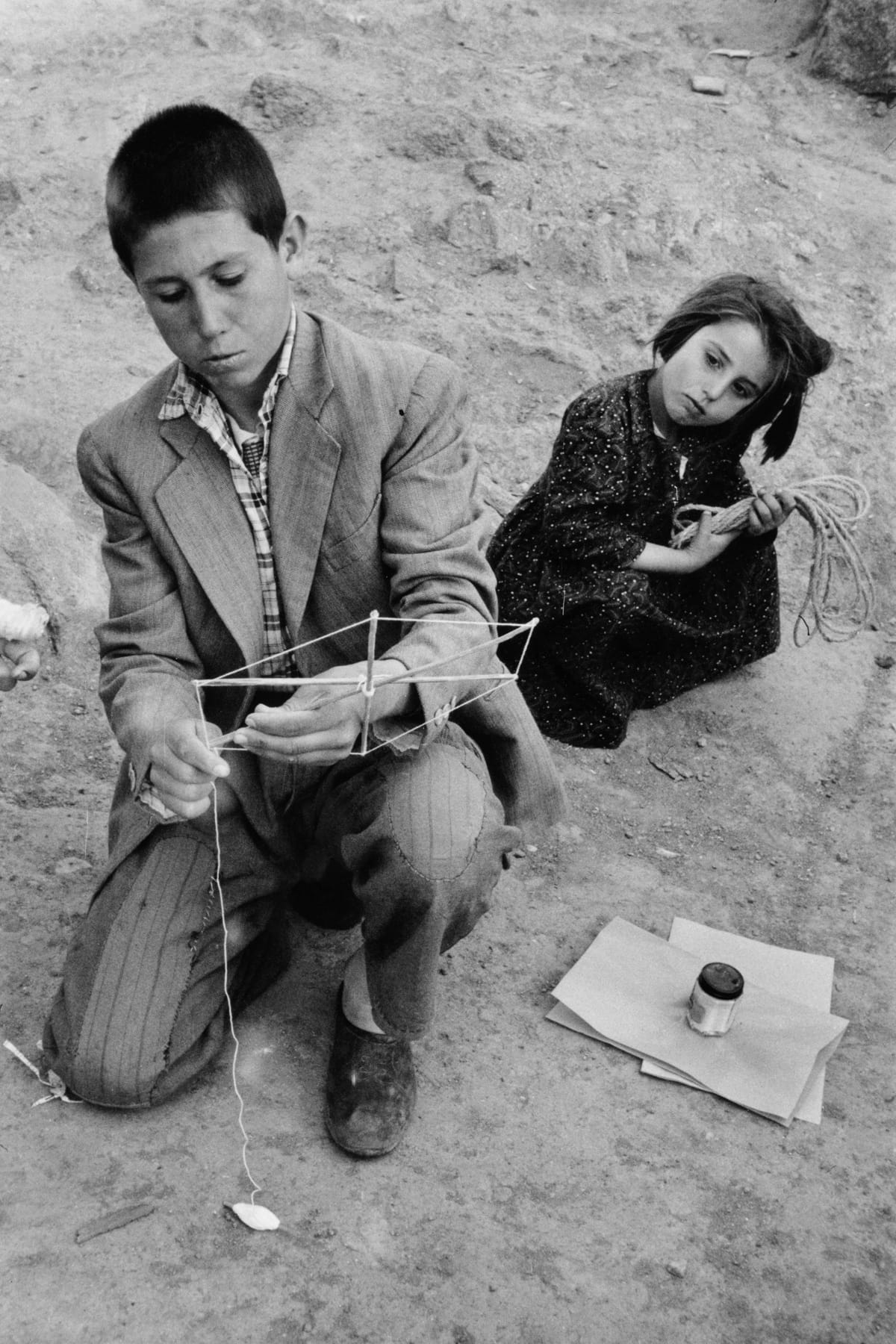


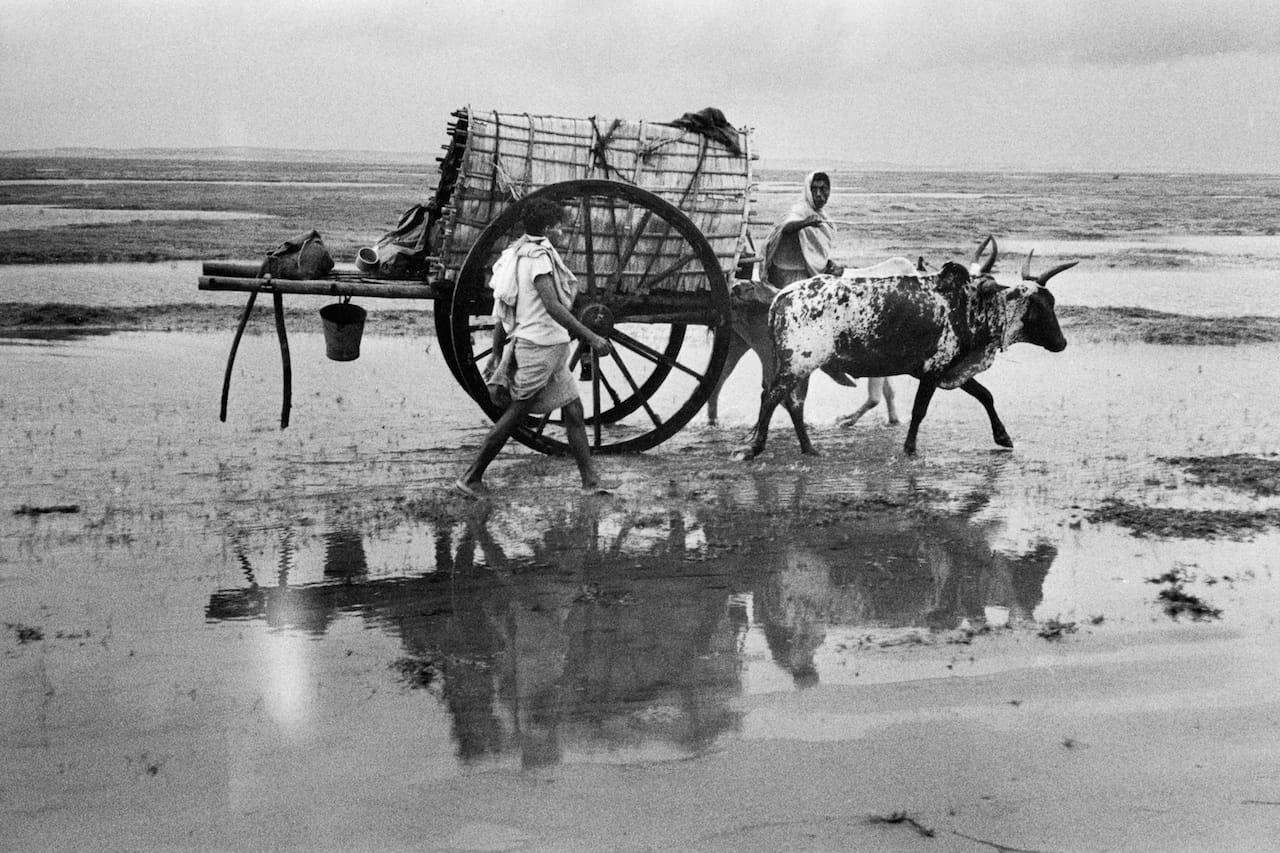
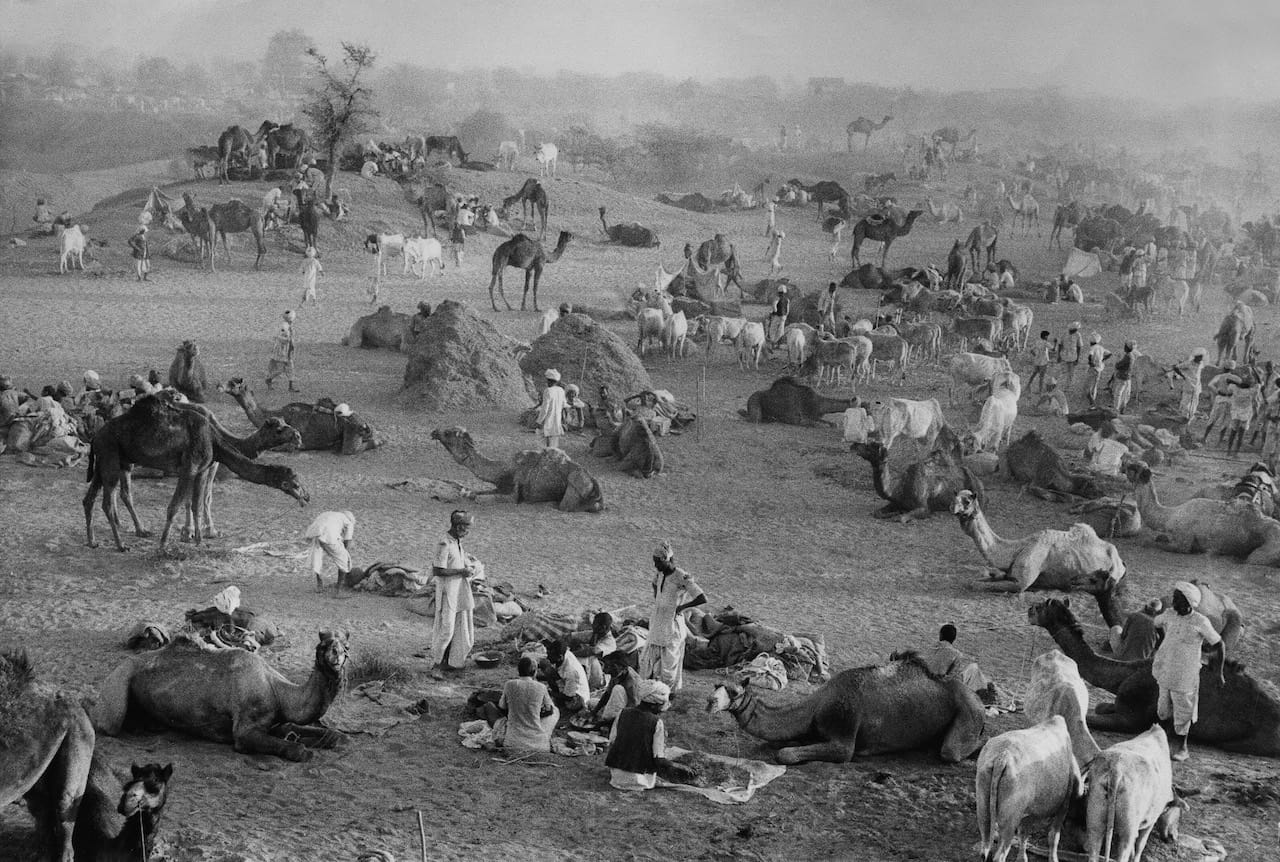
Witness at a Crossroads: Photographer Marc Riboud in Asia continues at the Rubin Museum of Art (150 W 17th Street, Chelsea, Manhattan) through March 23, 2015.




